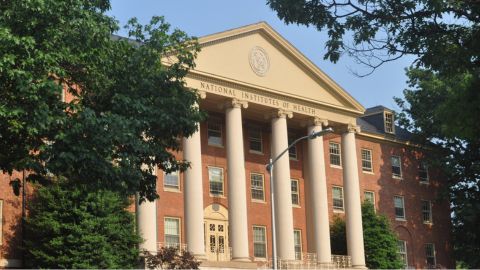What does full FDA approval of a vaccine do if it’s already authorized for emergency use?
Thirty percent of unvaccinated American adults say they’re waiting for the COVID-19 vaccines currently authorized for emergency use to be officially approved by the U.S. Food and Drug Administration. The FDA has since granted that approval for those age 16 and older for the Pfizer-BioNTech vaccine on Aug. 23, 2021. What had to happen for the FDA to advance from emergency use authorization, or EUA, to full approval?

I’m a pharmacist who trains other pharmacists, health care providers and students on why, when and how to administer vaccines. Emergency use authorization, while streamlining the regulatory process so the vaccine is more quickly available to the public, still follows a rigorous process the FDA requires to ensure vaccine safety and effectiveness. The difference is that more time has passed and more data is available for review when a company applies for full approval.
EUA and full approval share similar first steps
For both emergency authorization and full approval, for COVID-19 vaccines, the FDA first requires initial safety studies on a small number of people. Here, researchers document potential adverse events, or side effects, that the vaccine may cause. Researchers also determine the safest and most effective dose of the vaccine.
Once the vaccine is determined to be safe and an optimal dose identified, researchers will create larger studies to ascertain how well it works in a controlled setting where some people are given the vaccine while others are given a placebo.
It is important to note that the number of people who participated in the initial COVID-19 safety studies was similar to that in the safety studies of other commonly used vaccines, including vaccines for tetanus, diphtheria, whooping cough and meningitis. Over 43,000 adults participated in the early phases of the Pfizer-BioNTech clinical trial, over 30,400 in Moderna’s and over 44,000 in Johnson and Johnson’s. Half the participants in each study were given a vaccine, while the other half were given a placebo.
Where EUA and full approval differ
From this point on, emergency use authorization and full FDA approval for COVID-19 vaccines follow different clinical study requirements.
For the emergency use authorization, the FDA requires at least half of the participants of the original studies to be followed for at least two months post-vaccination. This is because the vast majority of vaccine-related side effects occur right after vaccination.

Full FDA approval, on the other hand, requires participants in the original studies to be followed for at least six months. Reviewers look at data from the same study participants but collected over a longer period of time. All adverse events are examined. The manufacturer must also provide more detailed manufacturing plans and processes, as well as a higher level of oversight and inspections. All of this adds significantly more time to the review process.
Both Pfizer and Moderna began their rolling submission for approval in the FDA’s “Fast Track” process, designed to speed up review. This allows the companies to submit portions of their approval application to the FDA for review as they’re completed.
Full FDA approval will initially apply to only the same age groups that were tested in the original emergency use authorization. This means that the vaccine has been approved first for people ages 16 and up for Pfizer, and will likely be approved for those 18 and up for Moderna. Rolling submission will allow approval of the vaccine for younger groups as more data becomes available.
Different timelines, same rigorous requirements
Full FDA approval is a milestone that may help build confidence among the vaccine hesitant about the safety of the vaccines. But the true test of the vaccine came when it first gained emergency use authorization. Then, researchers identified the majority of its potential side effects and proved its ability to protect against severe disease.
Article updated on Aug. 23, 2021 to reflect FDA approval of Pfizer BioNTech vaccine for those ages 16 and older.
This article is republished from The Conversation under a Creative Commons license. Read the original article.
![]()
Enjoy reading ASBMB Today?
Become a member to receive the print edition four times a year and the digital edition weekly.
Learn moreGet the latest from ASBMB Today
Enter your email address, and we’ll send you a weekly email with recent articles, interviews and more.
Latest in Policy
Policy highlights or most popular articles

Applied research won’t flourish without basic science
Three senior figures at the US National Institutes of Health explain why the agency remains committed to supporting basic science and research.

ASBMB weighs in on NIH reform proposal
The agency must continue to prioritize investigator-initiated, curiosity-driven basic research, society says.

ASBMB seeks feedback on NIH postdoc training questions
The National Institutes of Health takes steps toward addressing concerns about support caps, a funding mechanism and professional development.

5 growing threats to academic freedom
From educational gag orders to the decline of tenure-track positions, academic freedom in the United States has been worsening in recent years.

Will Congress revive the China Initiative?
The 2018 program to counter economic espionage raised fears about anti-Asian discrimination and discouraged researchers.

The sweeping impact of the Supreme Court’s Chevron reversal
Repealing the 40-year-old doctrine throws laws on climate, conservation, health, technology and more into doubt.

